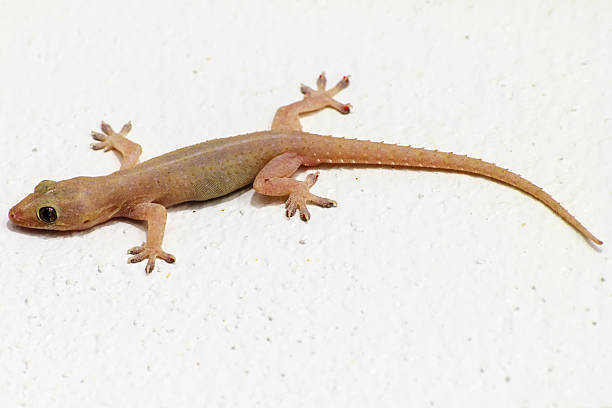

It is ‘the unwelcomed visitor’ you see darting across the wall in the house when they sight preys, spiders or any other insects, mostly at night. It could scurry out of hiding behind shelves, cupboards or cabinets, or any available cool hiding place when disturbed.
It is a house gecko (Hemidactylus frenatus), found in Africa, though considered native to South and Southeast Asia. It is also known as the Asian house gecko, Pacific house gecko, wall gecko, house lizard, tayoto, chipkalior moon lizard. In parts of Australia and Papua New Guinea, they are often confused with a similar native lizard, the dubious dtella.
Geckos seem harmless at face value, but they could be a source of potential danger to humans, which may lead to fatality going by stories about wall gecko-related deaths. In what sense, one may ask? Here are some incidents.
A family of six has died after reportedly eating food trampled by a wall gecko in the Mowe community of Obafemi Owode LGA, Ogun State.
The victims, identified as Adeleke John Samuel, a chartered accountant, his wife, Pamela Adeleke, their two children and two other relatives, were discovered dead.
A slippery House Lizard known as Wall Gecko also called Omo’nle in Yoruba fell into a pot of soup prepared by a housewife in Nigeria unknowingly and it killed the woman and her 9 children after eating.
Another woman prepared Tea in a kettle which the gecko fell into, and all the family that drank the tea died.
What could be the root of this fatality, as experts say wall gecko is not deadly?
According to Animal Diversity Web, a database run by the University of Michigan in the US, “geckos are non-venomous and harmless to humans”.
An invasive animal risk assessment by the Australian Department of Agriculture and Fisheries also said the wall gecko “does not present a threat to human safety”. – Motunrayo Joel
However, because the wall gecko carries a lot of bacteria in its mouth, the tendency of one getting infected by the bacteria is high. Also, some of the bacteria multiply within a short time which can cause serious harm to one’s body within a short while
How to Get Rid of House Gecko
So you’re not comfortable with the beady-eyed reptile that always seems to be looking at you from its perch on the wall. Well, getting rid of it is actually easy.
While there are no certified pesticides to get rid of them, pesticides do help in that they do reduce the food supply, thereby forcing the geckos to move out.
But this is not very effective so let me show you some effective ways of combating geckos in your home.
They say prevention is better than cure. That definitely applies to common house geckos as well. It is easier to prevent geckos from entering your home than it is to get them out. It applies especially if your home has a good supply of food and the right temperatures for them to thrive.
In order to keep geckos from entering your home, inspect your house and seal off all entry points.
This can include the weather stripping around doors and windows, cracks and crevices around plumbing or electrical penetrations, and any other gap you can find in your structure.
Using silicon caulks or expanding foam sealers eliminates any gap they may use for entry or harborage.
If you have eggshells, you can place them around your home to scare off geckos, do not crush the eggshells, leave them in two halves.
If you have mothballs, you can place them around to repel geckos.
Garlic and salt remedy: Research has it that blending garlic together with salt helps to get rid of these household pests. Spread this mixture on areas you see these reptiles.
The smell will get rid of the wall geckos.
If you have coffee and tobacco, you can make a gecko poison.
If you have garlic cloves, you can use them to repel geckos with the odour.
If you have onions, cut some up to keep geckos at bay.
If you have cayenne pepper or Tabasco sauce, you can make a homemade pepper spray.
By gecko-proofing your home, you can be assured that you can have your house to yourself again.
Physically Evict Them
Physically taking any gecko you find in your house is probably the most humane way of getting rid of them. Remember, it’s non-toxic and therefore, harmless.
Simply get a container and capture the gecko. If you are tempted to keep it as a pet, by all means, go ahead. Otherwise, take it outside and release it.
Capture and Eliminate
This one is definitely not for the faint-hearted and is only to be used as an extreme measure.
Capturing these delicate reptiles involves the use of glue boards and sticky cards.
Place them near lights, on windows, and any other places geckos like to pass.
Be warned though, this method won’t kill them instantly neither does it facilitate releasing the gecko outside. If anything, the gecko will suffer a slow and painful death.
Culled/Adetutu Adetule
Subscribe to our Telegram and YouTube Channels also join our Whatsapp Update Group